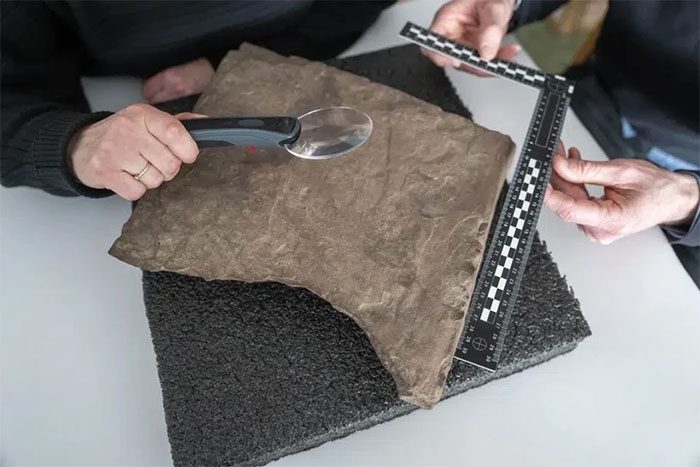On January 23, the Odense Museum in Denmark announced that the country’s archaeologists have discovered a small dagger inscribed with runes, dating back 2,000 years. This is the oldest evidence of writing found in Scandinavia within this nation.
Archaeologist Jakob Bonde stated that the blade of the ancient dagger features 5 runes, which are the oldest runic inscriptions that archaeologists have found in Denmark.

The archaeologists have discovered a small dagger inscribed with runes. (Illustration: AFP).
The iron dagger, dated to about 150 years AD, was found in a grave at the eastern cemetery of Odense, located in Central Denmark. The five runes spell the word “hirila”, in Proto-Norse language, which at that time meant “small sword.”
Archaeologist Bonde considers these inscriptions as notes from the past, providing an opportunity to understand better the development of the oldest known language in Scandinavia and how people interacted with one another.
According to archaeologist Bonde, the owner of this dagger wanted to demonstrate or aspired to be some form of warrior.
Runes belong to the oldest alphabet in the Scandinavian languages. They were used from the 1st or 2nd century AD in Northern Europe until they were replaced by the Latin alphabet in the 10th century, coinciding with the spread of Christianity in Europe.
The earliest traces of human settlements in what is now Denmark date back to the Stone Age—around 4,000 years BC—but there is no evidence of writing before the Iron Age (0 – 400 AD).
In 1865, archaeologists discovered a small comb made of bone inscribed with runes, dating to the same period as the dagger. Evidence of runes has also been found on stone monuments in the town of Jelling, established in the 10th century.
According to archaeologists, when writing first appeared in Scandinavia, it was limited to small inscriptions primarily on objects.


















































